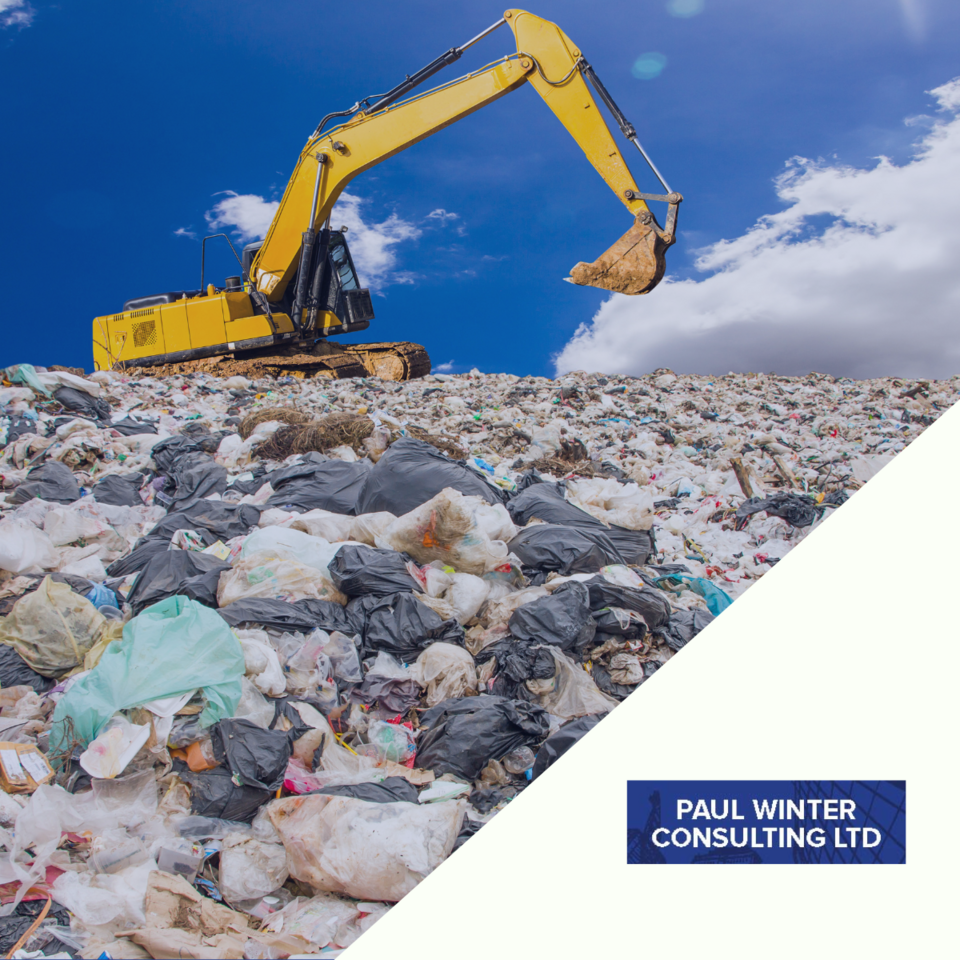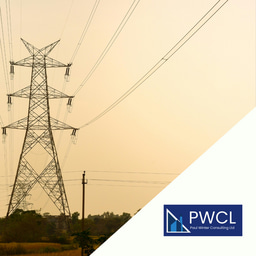Energy from Waste or landfill: which has more of an impact on the environment?

Recently, we wrote about the DEFRA announcement in December declaring that waste incinerators will only receive planning approval if they ‘meet strict new local and environmental conditions’.
As part of this article, we briefly explored the impact Energy from Waste (EfW) facilities have on the environment compared to landfill. However, much more can be said about this very specific topic.
Energy from Waste or landfill: which has more of an impact on the environment?
EfW facilities have received a lot of negative press over the last 12 months especially, not least of all because of the emissions released and the perceived significant negative impact this has on the environment.
And, whilst EfW facilities do emit greenhouse gases, heavy metals and other pollutants into the air, what’s missing from the negative discourse surrounding them is their place in waste treatment and as an alternative to landfill.
Indeed, EfWs take waste that may otherwise end up in landfill and meaningfully repurpose it; recycling and reusing it to generate energy for use in the National Grid.
And, especially since the introduction of BAT standards in 2022, EfW facility emissions have significantly reduced in recent years.
The problems with landfill: emissions and toxins
Direct Emissions landfill: waste in landfill emits multiple harmful gases and compounds into the atmosphere, including methane (CH₄), carbon dioxide (CO₂), volatile organic compounds (VOCs), and hydrogen sulfide (H₂S), where methane is a potent greenhouse gas with a global warming potential significantly higher than CO₂. At extremely high concentrations (greater than 50,000 ppm or 5% by volume), CH₄ can act as an asphyxiant, and is also flammable or explosive (5%-15% by volume) when mixed with air and ignited.
Landfill Gas Engines: with this, landfill gas engines capture and combust landfill gas to produce energy, converting CH₄ into CO₂ and releasing nitrogen oxides (NOₓ), sulphur oxides (SOₓ), and particulate matter (PM).
Long-Term Risks: the long-term risks of landfills are significant as landfills continue to emit methane for decades even after closure and pose risks of leachate contamination, fugitive emissions, and structural issues requiring long-term monitoring.
Odour: landfills are inherently more prone to odour problems due to the anaerobic decomposition of waste, and in particular sulphur bearing wastes which generate hydrogen sulphide (H2S); H2S is extremely odorous, very toxic and significantly more flammable than methane. What’s more, odour from landfills can blight communities for years.
Acid rain: following on from the above, H2S produces other challenges when it is extracted from a landfill and combusted in either a landfill gas engine or a flare. During combustion the H2S is converted to sulphur dioxide (SO₂), which is also toxic and odorous, but less so than H2S. However, SO2 emissions can adversely impact local air quality and when dissolved in moisture in the air it forms a precursor to acid rain.
EfW emissions in comparison to landfill
Emissions: EfW facilities are more controlled and emit fewer pollutants than landfills or landfill gas engines. EfW facilities release primarily CO₂ which is mostly biogenic, small amounts of NOₓ, sulphur compounds, particulate matter, and minimal dioxins and furans. Advanced emissions control technologies ensure compliance with stringent BAT standards.
Odour: with this, EfWs avoid methane emissions entirely and produce significantly less odour which can, of course, be significantly less impactful on local communities.
Hydrogen Sulphide (H₂S): compared to landfill, Hydrogen Sulphide (H₂S) emissions are negligible. This is due to the high-temperatures used in the EfW process; where H₂S is destroyed in high-temperature combustion.
Heavy Metal Emissions: modern technologies and regulations make BAT-compliant EfWs far cleaner and more environmentally friendly than older facilities. This is because modern BAT-compliant EfW facilities emit significantly lower levels of heavy metals (mercury, cadmium, and lead) compared to pre-BAT facilities due to advanced emissions control technologies and stricter regulation via the EU Industrial Emissions Directive (IED).
- Mercury (Hg): Reduced to <0.05 mg/m³.
- Cadmium (Cd): Reduced to <0.02 mg/m³.
Lead (Pb): in BAT compliant EfW facilities, lead (Pb) is reduced to <0.5 mg/m³ whereas pre-BAT facilities had significantly higher emissions due to less effective or absent control systems. These reductions are a result of BAT compliant emissions control technologies such as:
- Fabric Filters : Remove >99% of particulate-bound metals.
- Activated Carbon Injection: Captures gaseous metals like mercury.
- Dry or Semi-Dry Scrubbers: Neutralize acidic gases and capture metals.
- Wet Scrubbers: Remove water-soluble metals and gases.
- Catalytic Systems (SCR): Enhance mercury capture by converting it into more manageable forms.
Unlike landfills, EfW's are also subject to ‘Continuous Emissions Monitoring Systems’ (CEMS) to ensure compliance; where the Continuous Emission Monitoring System (CEMS) is an integrated system put in place to measure the flow, dust, and concentration of air pollutants, and other parameters in accordance with EfW regulations.
Finally, it's important to reiterate that landfills emit significant amounts of methane and require decades of ongoing management even after closure to manage gas emissions, posing long-term risks. In contrast, EfWs largely eliminate odours through advanced containment and incineration technologies, making them less likely to cause odour-related complaints.
So, although EfW facilities do emit carbon dioxide and other air pollutants, the introduction of BAT standards has significantly reduced these pollutants in recent years and, when compared to landfill emissions, EfW emissions are mostly insignificant or negligible.





Please sign in or register for FREE
If you are a registered user on Energy from Waste Network, please sign in
Great article Paul, well constructed and informative. Leachate is also another product of landfills that needs long term monitoring and treatment.
We at AGS Energy Ltd have continually improved, modified and upgraded our small to medium scale EfW gasification waste treatment system.
We have simplified the process to such a degree we now have a patent on our modular plant offerings.
AGS Energy technology is designed to operate on a clients industrial site, farm, remote location, refugee camp or even a hospital, treating the organic waste at source and providing clean, green emissions with renewable energy provision, such as hot water, steam, chilled air or electricity - "AGS Energy, Taking the Solution to the Problem". Depending on the input feedstock, the output is either Biochar or a very fine 'flinty ash'. Both outputs have commercial value.
AGS Energy uses state of the art BAT filtration and particle capture technology that meets and exceeds the emission limits of the IED 2010/75/EU
www.agsenergy.eu info@agvsenergy.eu
Check out one of our many short and simple explainer video's here: AGS Energy
Thank you for your comment, Tim. I’m glad you enjoyed the article and read it with interest. A very good point made, re: Leachate, I’ll be sure to add that in! I shall certainly watch the videos with interest, particularly the video on ‘Agri Food Waste Streams’. We discuss gasification often on the news section of our website: https://www.paul-winter.co.uk/news/ but, given the negativity around EfW facilities in the media at the moment, we feel it’s currently very important to highlight their crucial place in waste treatment and waste recycling.
Paul, I appreciate your positive reply and will indeed look at the News section of your website.
I would also like to carry on the conversation and will pass on my details through your website.
However, always the opportunist, and while this subject is worthy of continued discussion, I would add the following in response:
🌱 Rethinking Waste: Why AGS Energy’s Small-Scale Solution is Essential for the UK ♻️
I fully agree with your comment and watch with interest the conversations around Energy from Waste (EfW) in the UK which I agree, has become increasingly negative. The UK public perception and concerns over emissions, incineration dependency, and environmental impacts are all dominating a lot of air time and digital space with the UK's media.
While large-scale EfW facilities face scrutiny, it is critical to recognise that not all waste-to-energy solutions are created equal.
This is where AGS Energy’s 'patented', small-to-medium-scale, simplified, gasification treatment technology offers a game-changing alternative that the UK urgently needs to consider adopting.
Why is AGS Energy Different you may ask?
Unlike traditional incinerators, which burn waste at high temperatures and produce significant emissions along with fly ash and bottom ash, AGS Energy utilises an advanced simplified gasification process that is:
✅ Decentralised, Small to Medium Scale & Modular – AGS solutions are designed for local deployment, eliminating the need for costly waste transport and reducing carbon footprints.
✅ Low-Emission & High-Efficiency – By converting waste into syngas in the absence of oxygen, our systems produce cleaner energy with minimal emissions compared to larger EfW plants, while producing a usable fine flinty ash or Biochar.
✅ Supports Circular Economy – AGS recovers valuable resources directly at the source of the waste arising, transforming organic waste into usable energy, rather than relying on landfills or inefficient mass incineration.
✅ Industry-Specific Applications – AGS Energy technology is ideal for distilleries, poultry and/or cattle farms, wastewater treatment plants, agriculture, and healthcare sectors, turning industry-specific waste challenges into energy solutions.
The UK’s Current Waste Problem:
🚨 Over 27 million tonnes of waste are generated annually in the UK, yet reliance on outdated landfill, (as mentioned in your excellent post) and large-scale incineration models fail to fully recover energy and resources and adversely the latter produces both fly and bottom ash that still need to be addressed as a waste by product of the process.
🚨 Landfill capacity is shrinking and costs are rising, creating an urgent need for scalable, localised solutions that can reduce waste at the source, “taking the solution to the problem”.
🚨 Current EfW plants often face public resistance due to their scale, emissions, and location conflicts—AGS Energy avoids these issues with site-specific, tailored deployment.
The Future of Waste Treatment Must Be Smarter, Not Bigger:
The UK must move beyond outdated EfW models and embrace decentralised, sustainable, and adaptable waste recovery solutions. AGS Energy offers exactly that. It’s time to reshape the EfW narrative and support innovations that prioritise efficiency, emissions reduction, and energy security.
💡 Want to know how AGS Energy can transform your waste challenges into energy opportunities? Let's talk. ♻️
#SustainableEnergy #WasteToEnergy #ResourceRecovery #AGSEnergy #CircularEconomy #DecentralisedSolutions #CleanEnergy